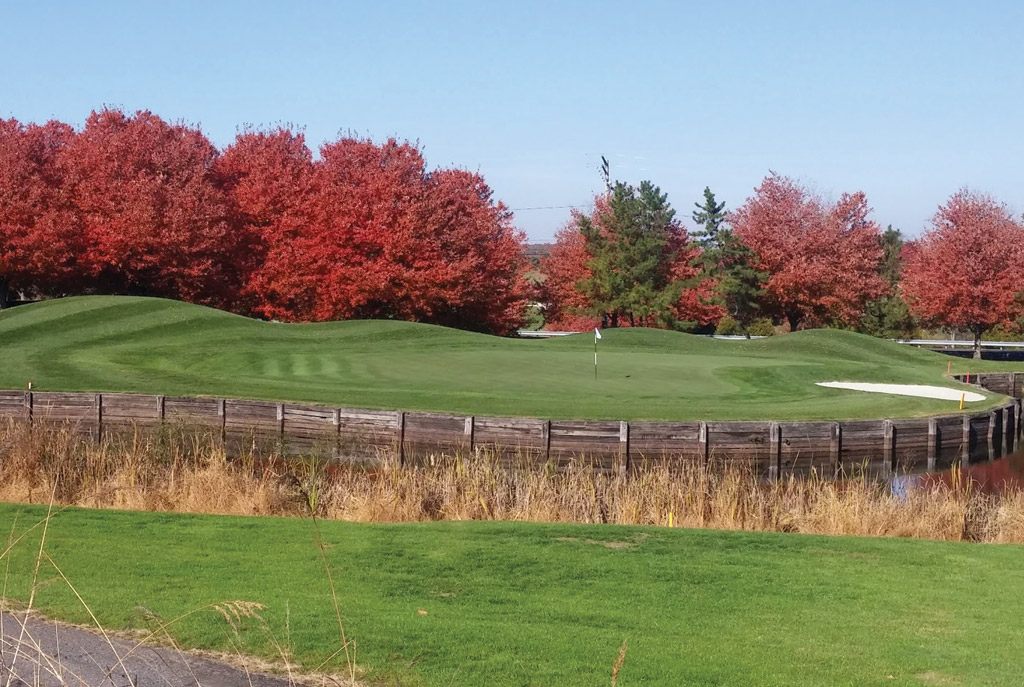We are interested in hearing your feedback on this question or answering questions you may have. Please use the form below to contact […]
[…]is the blog text associated with the Pollinators Blog Post. This text would contain news and information about the topic of Pollinators and would be helpful for golf courses in Maryland and other locations related to best practices for golf courses. This is the blog text associated with the Pollinators Blog Post. This text would contain news and information about the topic of Pollinators and would be helpful for golf courses in Maryland and other locations related to best practices for golf courses. This is the blog text associated with the Pollinators Blog Post. This text would contain news and […]
[…]because they absorb nutrients from the pond water and create shade. For more information on managing aquatic plants and algae in ponds in Maryland, see Urban and Stormwater Pond Management and see Plants Recommended for Stormwater Ponds for Maryland-specific native aquatic plant recommendations. Best Management Practices Ponds are more resistant to problems if they have a narrow fringe of vegetation along the edge, instead of highly maintained turfgrass. In ponds with littoral plantings, problem plants should be selectively controlled without damaging littoral shelves. Encourage clumps of native emergent vegetation at the shoreline. A comprehensive management plan should include strategies to […]
[…]depends on the type of pesticide and the route of exposure. The pesticide label provides information on personal protective equipment (PPE) and first aid information specific to the product. Therefore, applicators should always read and follow the label before using a pesticide in addition to following standard safe practices. Safety Data Sheets (SDS) (formerly Material Safety Data Sheets [MSDS]) also provide important information on hazardous chemicals. Using SDS in conjunction with the product label will provide not only a good description of the potential risks, but also appropriate and required exposure minimization measures that will help reduce any such risks. […]
[…]regulations establish a much lower limit on the maximum amount of waste than federal regulations for qualifying as a “small quantity generator” of hazardous waste. In Maryland, as little as 100 kilograms of used solvents for disposal trigger state reporting requirements. Pesticides that have been mixed so they cannot be legally applied to a site in accordance with the label must be disposed of as a waste. Depending on the materials involved, they may be classified as hazardous waste. In the event of a spill, contact the MDE Emergency Response Division (866-633-4686) and the National Response Center (800-424-8802) to determine […]
[…]or aesthetically damaging levels with the least risk to the environment. IPM programs have basic components that provide the opportunity to make informed decisions on the control of pests on the golf course. The steps of an effective IPM program are as follows: Identify pests and understand their biology. Monitor the pests to be managed. Develop the pest management goal by setting pest population thresholds. Implement the IPM program. Record and evaluate the results. IPM also encompasses the prevention of pest problems before they occur by selecting cultivars for improved pest resistance, using cultural practices to lessen the potential for […]
[…]and type of plant acreage or area treated address of treated property name of property common name and EPA registration number of pesticides used or recommended rate of concentration of pesticide used or recommended total amount of pesticide used EPA registration number of the product type of equipment used* time of day of application* wind direction and estimated velocity weather conditions at the site when the pesticide was applied* (This information is not required if the application consists of baits in bait stations or if it is indoors or within 3 feet of a structure.) * Items marked with an […]
[…]life of an existing system and reduces pumping costs. Monitor the power consumption of pump stations for problems with the pump motors, control valves, or distribution system. Increase frequency of routine inspection/calibration of soil moisture sensors that may be operating in high-salinity soils. Inspect irrigation pipes and look for fitting breaks caused by surges in the system. Install thrust blocks to support conveyances. Maintain air-relief and vacuum-breaker valves. Have qualified pump personnel perform regular checks of amperage to accurately identify increased power usage that indicates potential problems. Check application/distribution efficiencies annually. Winterize the irrigation system to prevent damage. Next: Sprinkler […]
[…]efforts consider the strategic use of appropriate course and irrigation design, plant selection, computerized and data-integrated scheduling, and alternative water quality/supply options that maximize plant health and reduce the potential for negative impacts on natural resources. Water quality protection is an integrated approach that includes irrigation practices, pesticide and nutrient practices, and regulatory compliance measures and structural measures as they concern environmental stewardship and policy. Irrigation BMPs may also provide an economic, regulatory compliance, and environmental stewardship advantage to those who consider them part of their irrigation management plan. BMPs are not intended to increase labor or place an undue […]
[…]and reporting requirements should be identified in the emergency plan. For more information on emergency planning and response to unintended releases in Maryland see: Chapter 9 “Emergency Planning.” Maryland Pesticide Applicator Core Manual, pp. 137-147. Pesticide Information Leaflet No. 16: Handling Pesticide Spills. 2013. University of Maryland. Best Management Practices Develop a golf course facility emergency response plan that includes procedures to control, contain, collect, and store spilled materials. Prominently post “Important Telephone Numbers,” including the numbers for MDA, MDE, and CHEMTREC (800-424-9300), for emergency information on hazards or actions to take in the event of a spill. Ensure an […]
